SecretStore 3.3.3 runs on AIX, Linux, Solaris, HP-UX, NetWare 5.x, NetWare 6, and Windows 2000/NT.
The UNIX servers require Novell eDirectory 8.7.1 or later. (NICI is automatically installed during server installation.)
The NetWare 5.x and NetWare 6 servers can run NDS 7, as long as NICI 2.4 or later is installed. However, we recommend that you upgrade to Novell eDirectory 8.5 or later.
Windows NT/2000 servers require eDirectory 8.7x and NICI 2.4 or later. The following figure illustrates SecretStore running on these platforms:
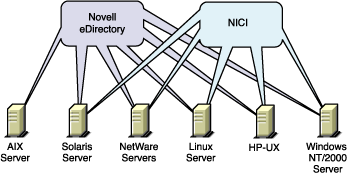
When you install SecretStore on these servers, the installation program installs the SecretStore service on top of eDirectory and NICI. SecretStore plug-ins run on top of SecretStore.
The following figure illustrates the server NCP and LDAP protocol stacks on a server platform:
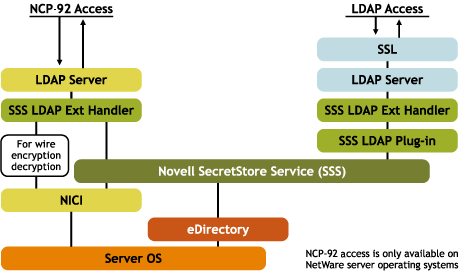
The following figure illustrates the client NCP and LDAP protocol stacks on a client workstation:
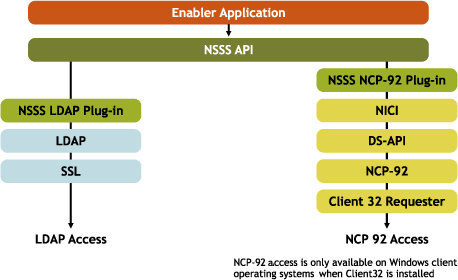
The following figure illustrates the SecretStore client and server architecture in Java*:
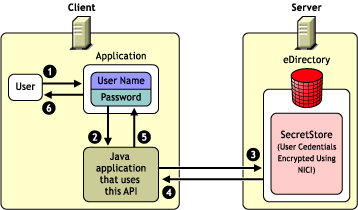
SecretStore plug-ins include client APIs, NCP, and an LDAP extension.
You install administrative and SecretStore components on a Windows workstation and administer SecretStore from there.
The following figure illustrates client software running on a Windows workstation:
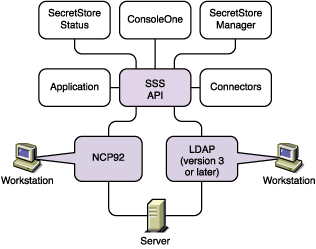
The following steps illustrate how SecretStore works:
If the connection does not discover matching credentials, the client prompts the user to add the application. Secrets are synchronized when certain events occur or when the user connects to or disconnects from eDirectory.
The figures below describe the process of single sign-on authentication and show how an enabled application can interface with SecretStore, read and write secrets, and authenticate the user.
For purposes of comparison, the following figure illustrates how a user might authenticate to a network application that isn't enabled for single sign-on.
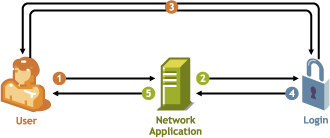
The following figure illustrates the first-time authentication to an application that has been enabled for single sign-on with SecretStore.

The following figure illustrates the processes involved in subsequent user authentication to a single sign-on enabled application using SecretStore.
